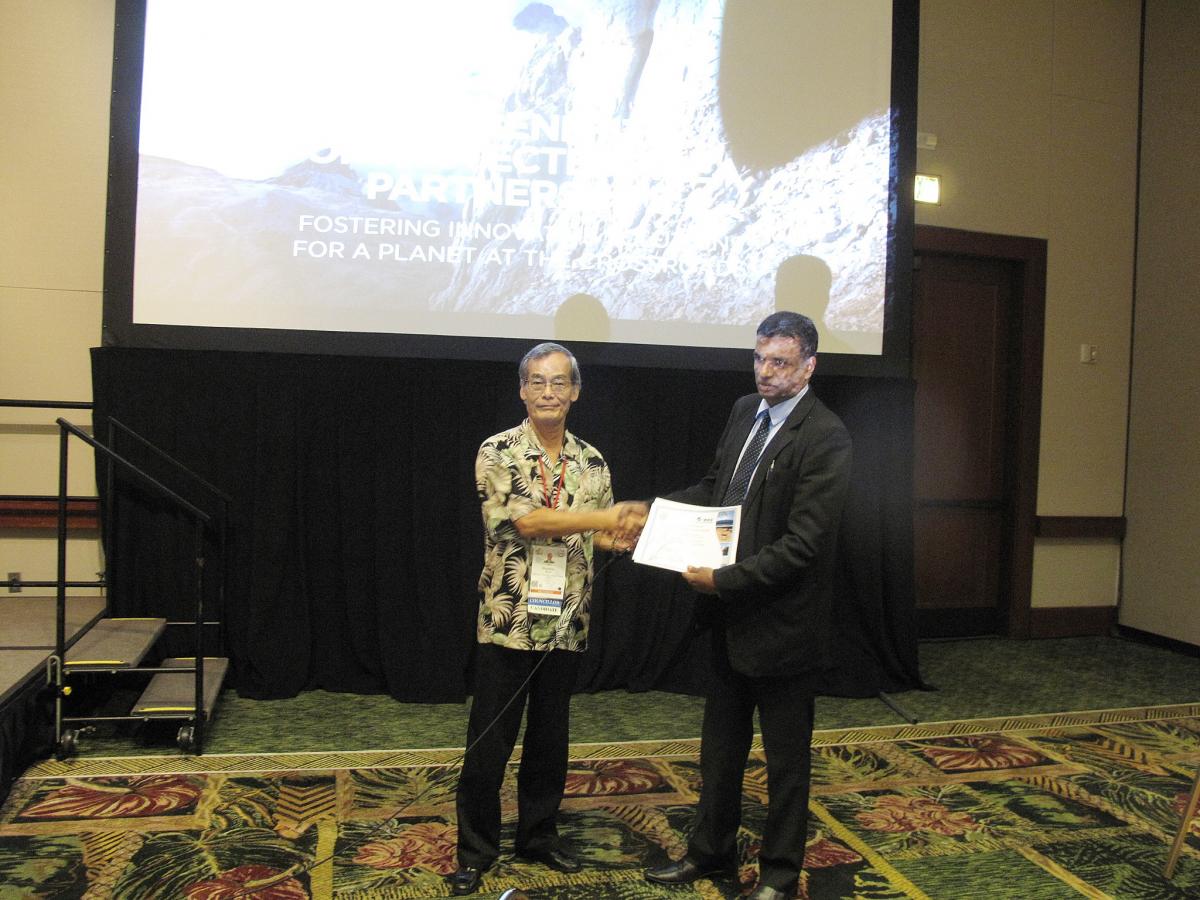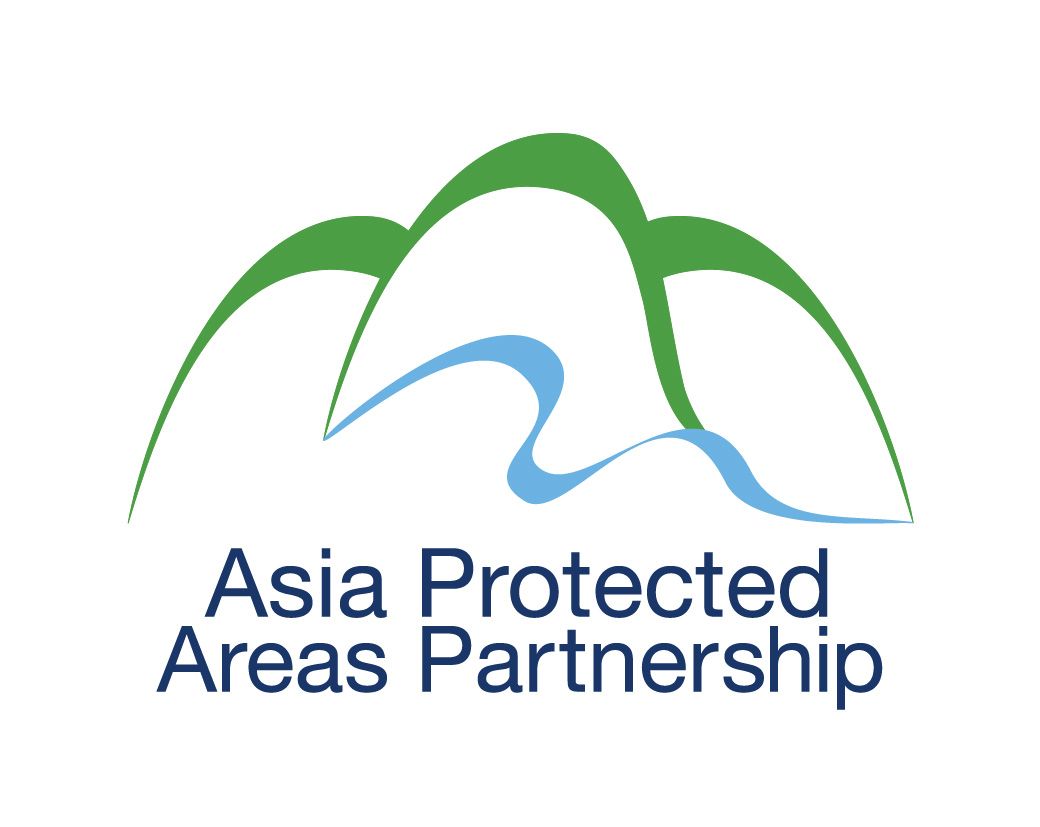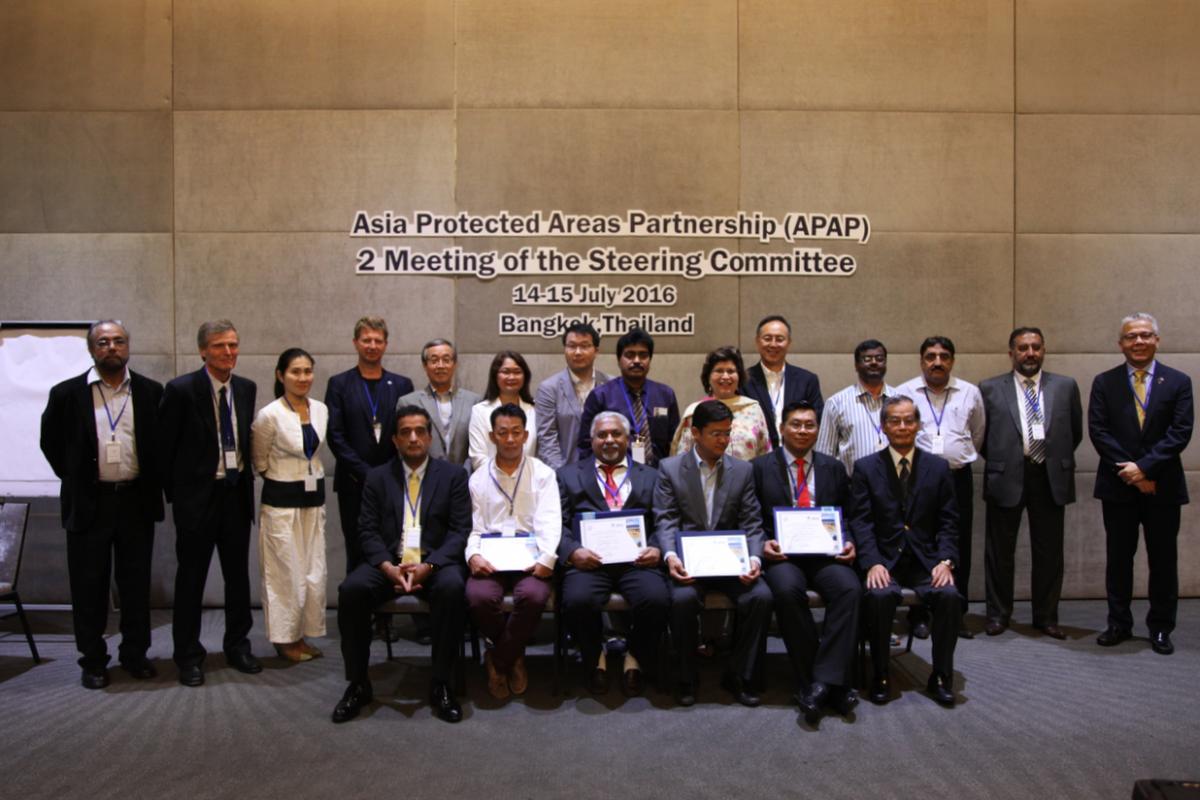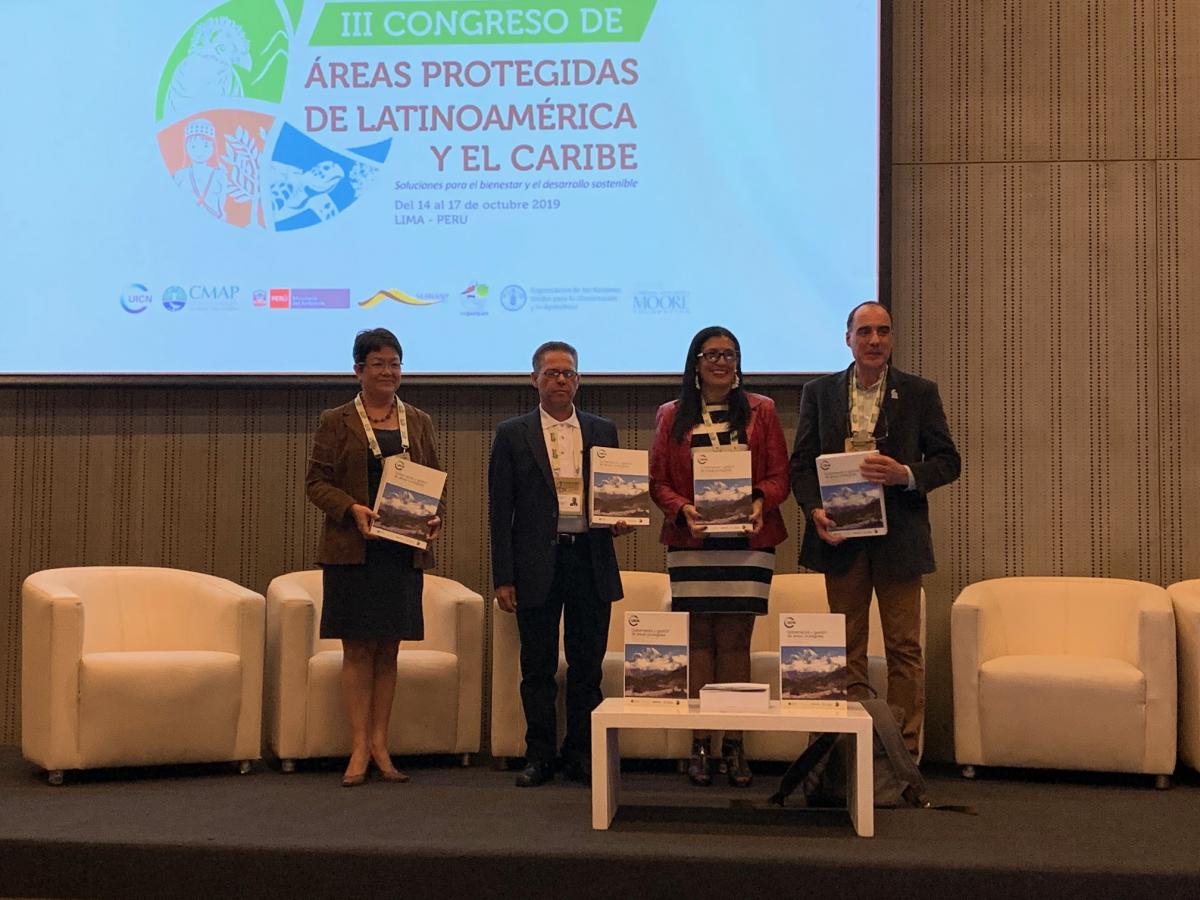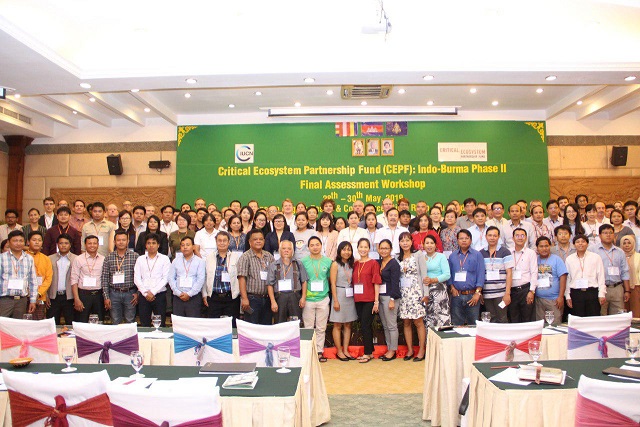Asia Protected Areas Partnership continues to gain momentum
IUCN Asia’s regional protected areas initiative, the Asia Protected Areas Partnership (APAP), has made significant headway with the adoption of the APAP constitution, alongside several other new developments.
Termed the "Partnership Document", the constitution will guide the future activities and growth of APAP as a leading network to promote regional collaboration, best practices and innovative solutions for Asia’s protected areas.
The constitution, which was adopted at the APAP Regional Steering Committee (RSC) meeting in Bangkok in July, sets out a vision and a suite of priority programme areas for the Partnership. Knowledge sharing and capacity building events, transboundary projects, and awareness-raising and advocacy are amongst the activities that will be organised by APAP to achieve its aims.
"The Partnership Document has been under discussion for nearly two years, and its adoption represents a major milestone in the development of APAP. We now have an agreed constitution that identifies the objectives of APAP, its governance structures, and its membership criteria," said Dr. Scott Perkin, Head of the Natural Resources Group for the IUCN Asia Regional Office. “The Partnership Document provides clear guidance on the future direction of APAP as well as a robust foundation for future growth.”
On the brand identity front, the partnership finalised its logo in August after a four-month long process that included several concept designs, feedback from members, edits, votes and sign-off from the Partnership’s secretariat. Through an online voting system, members voted for their favourite logo out of four designs. The democratically chosen emblem features fluid lines in green and blue, representing both terrestrial and aquatic ecosystems.
“We are very excited about the logo, as it captures the essence of the Partnership in a visually attractive and powerfully symbolic way”, said Ambassador Masahiko Horie, IUCN Regional Councillor for South and East Asia and Ambassador for Global Environmental Affairs, Ministry of Foreign Affairs, Japan. "I believe it will play an important role in helping to establish APAP's identity and corporate image."
In another important development, APAP’s membership has nearly doubled – from seven in mid-2015 to a total of 13 as of October this year. Newest members include the Ministry of Environment, Forest and Climate Change in India, and the Forest Department of the Ministry of Mahaweli Development and Environment in Sri Lanka, who joined the partnership in July and September respectively.
Both government agencies bring an incredible wealth of protected area experience to APAP. India, for example, is a global leader in tiger conservation, whilst Sri Lanka's Forest Department is one of the oldest in the world. With the addition of these two new members, nearly every country in South Asia is now represented in the Partnership. Over the next year, APAP will seek to continue its growth and to encourage more countries across Asia to join.
Plans are also being finalised for APAP's next training event: a workshop on visitor management and the control of invasive alien species, to be held at Mt Fuji National Park in Japan. Both topics have become issues of increasing concern to protected area managers across Asia. The workshop will provide a forum for sharing practical experience from the region, as well as showcasing Japan's approaches to these challenges.
A number of other countries, including Bhutan and India, have indicated their interest in hosting training and knowledge sharing events. “I am delighted that more and more countries are stepping forward to host APAP events, and that the Partnership is now beginning to fulfil its potential as a regional platform for capacity building and experience sharing,” said Dr. Perkin.
Asia Protected Areas Partnership has been designed as a key platform to help governments and other stakeholders collaborate for more effective management of protected areas in the region. The partnership was initiated in 2013 at the first-ever Asia Parks Congress held in Japan, and formally launched the following year at the IUCN World Parks Congress in Australia. It is chaired by IUCN, International Union for Conservation of Nature, and co-chaired by an APAP member organisation on a rotational basis, beginning with the Ministry of the Environment, Japan.
